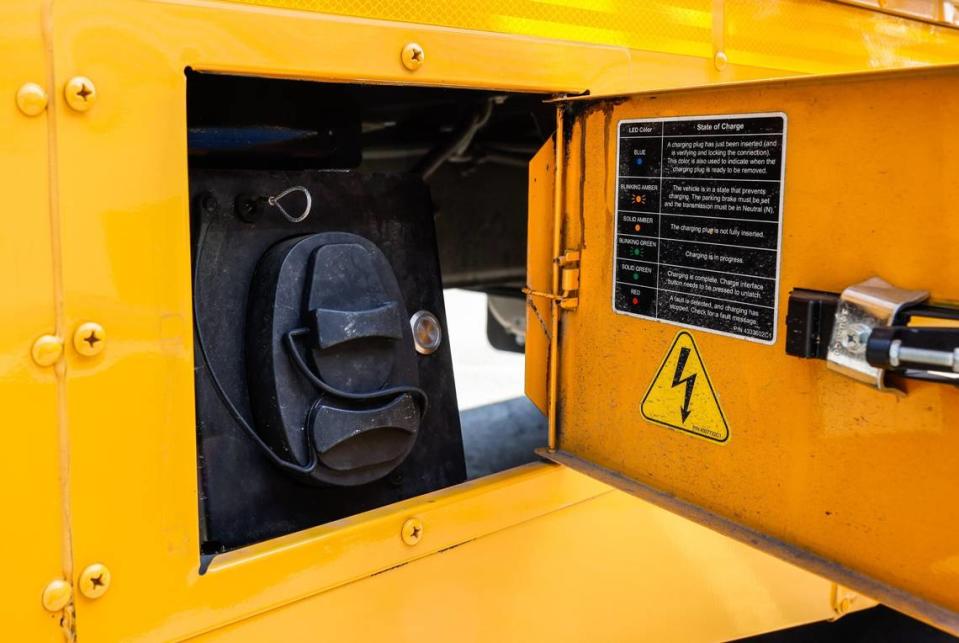Not your father’s school bus: Why some CMS students get a quieter ride to class in August
Charlotte-Mecklenburg Schools is pressing the accelerator on its rollout of electric school buses.
CMS is one of 15 school districts in the state of North Carolina, and 531 nationwide, selected by the U.S. Environmental Protection Agency to split $900 million in grant funding to replace old, diesel-powered school buses with electric models. CMS is getting a total of $8.6 million for 25 buses.
Including those grant-funded vehicles, the district is bringing in 55 electric buses over the next three school years. It will debut three electric buses in August and 27 more the following school year. The 25 buses funded by the federal grant will enter the fleet inthe 2026-2027 year.
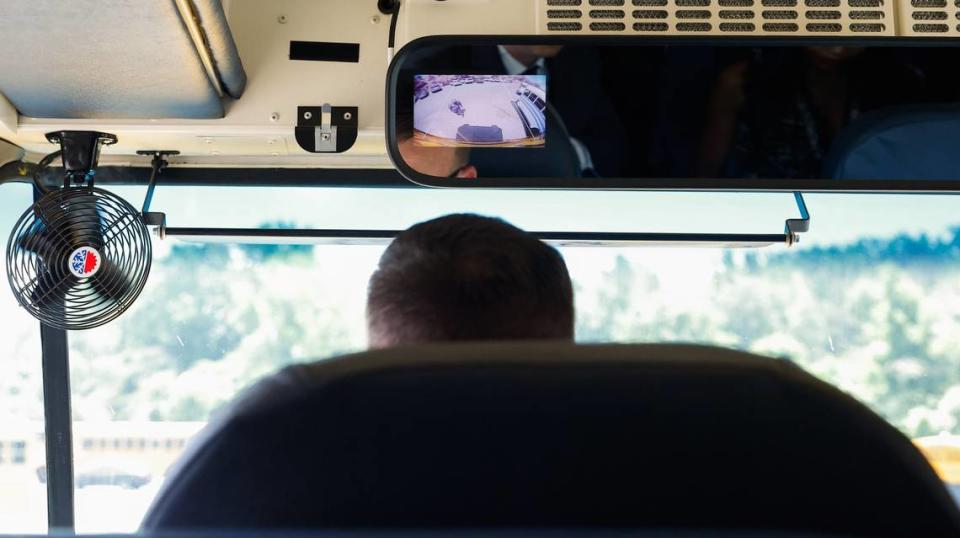
The federal grant buses alone will save about 70,000 gallons of diesel fuel, according to EPA Deputy Regional Administrator Cesar Zapata. School leaders also say the buses are a healthier option for students.
“This collective effort is allowing CMS to do our part to preserve the environment for generations,” CMS Vice Chair Dee Rankin said after the ride.
Observer education reporter looks for herself
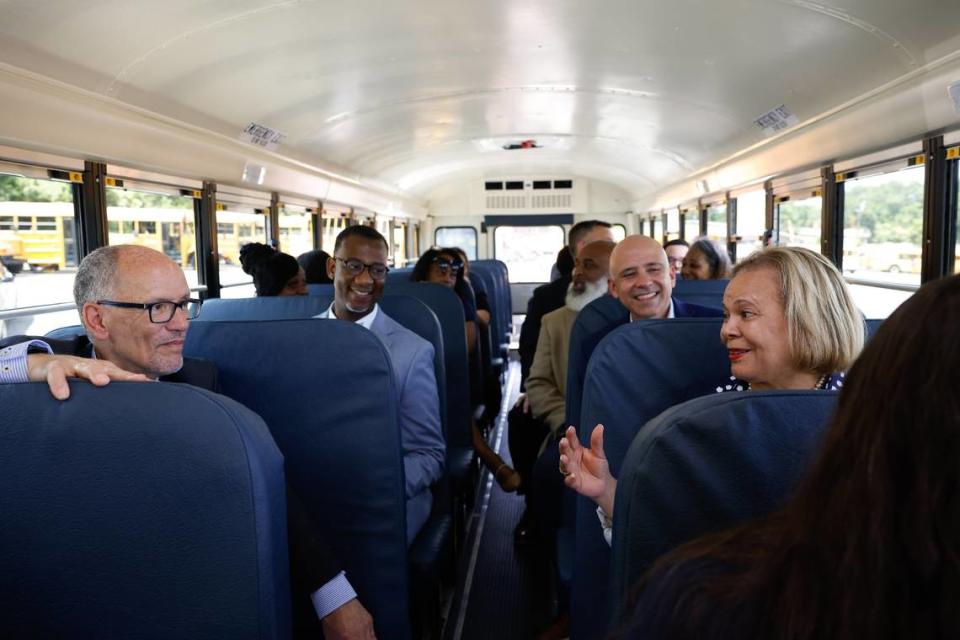
I took my first school bus ride in nearly a decade Thursday alongside two CMS school board members, Charlotte’s mayor and a senior advisor to President Joe Biden. It felt a bit like a scene from a particularly weird dream. We were all there to take one of CMS’ newest electric vehicles for a spin.
The bus had the same look as the school buses I grew up with in the 2000s, bright yellow paint job and all. The only difference from the outside was a small marker on its front left side designating it as an electric vehicle. If I hadn’t been looking for it, I would’ve missed it.
We filed up the steps and into the rows of charcoal faux-leather benches, chatting and opening windows to let the air in on our ride. It was all very nostalgic. Once we pulled out of the lot and onto Wilkinson Boulevard, differences were easier to spot.
For starters, it was quiet. There was no engine roar or rumble in the floor that rattled at stoplights – just a slight, low hum. Lequisha Mercer, a CMS bus driver of 14 years and CMS parent, rode along as well. She said the quieter ride would make a big difference in her daily life.
“These clean energy buses will help me and my colleagues focus on the road, hear the students more clearly and have a smoother ride,” Mercer said.
Another upgrade from yellow school buses of yore: the backup camera in the driver’s rear window. Like modern-day cars, it allows the driver to have better visibility when parking or reversing, so as not to inadvertently injure students.
Propane buses, too?
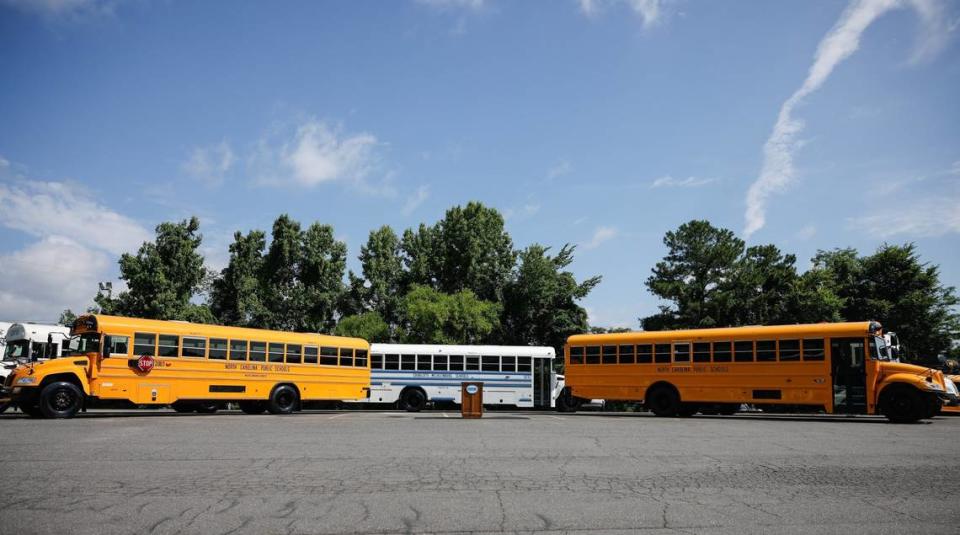
The 55 new electric models will join 110 propane-powered models the district already has, bringing the number of clean energy buses to 165.
“That’s about 20% of our total fleet,” CMS Chief Operations Officer Brian Schultz said.
He said CMS wants to increase its proportion of clean energy vehicles in the future if the first group shows promise.
“We want to monitor how these buses perform on their routes first,” Schultz said. “These ones we’re starting this year are going to be doing shorter routes and charging in the middle of the day, since they take about 45 minutes to charge.”
Schultz said charging stations are being installed now.
Emission reduction is the primary upside of electric buses. Leaders who rode the bus Thursday emphasized lower pollution isn’t just a benefit to the environment, but also to the health of kids who ride the bus every day.
Air pollution is a problem across the U.S., and communities of color and low-income communities disproportionately bear the burden of air pollution, according to a 2022 report from The American Lung Association. It’s linked with increased rates of health problems such as asthma. Children are more at-risk of developing health issues as a result of particle pollution than adults.
“Equity means understanding the public health dimension of this,” said Tom Perez, White House director of intergovernmental affairs and senior advisor to President Biden. “Having electric school buses is part of the larger strategy to make sure that from the moment you leave home to the moment you come home, you’re safe.”
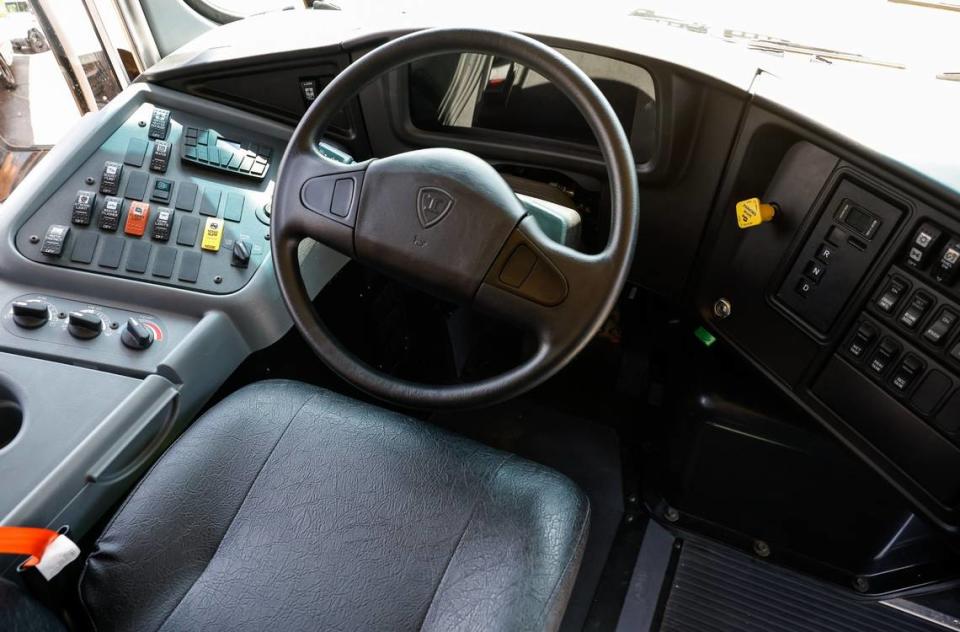
Some buses with diesel fuel engines also have a defect that allows too much diesel fuel in the engine, a fire risk, according to reporting from a group of N.C. news outlets. One school bus in Statesville caught fire in May 2021 as a result, the reporting shows.
CMS’ new buses join a number of low or no-emission vehicles purchased by the Charlotte Area Transit System last year.
“We have the ability to change lives at the moment in time, to have clean air at this moment in time,” said Charlotte Mayor Vi Lyles. “This is just a small part of what we want to be able to brag about.”
